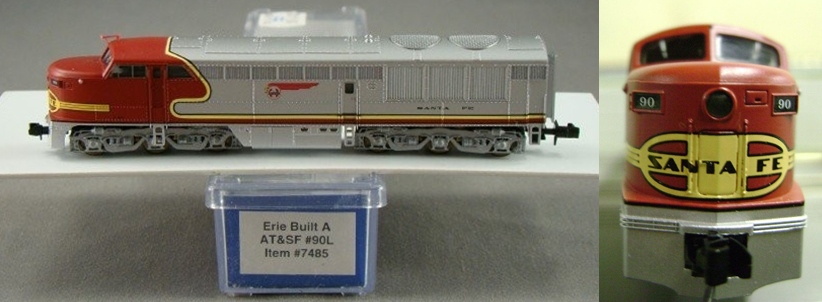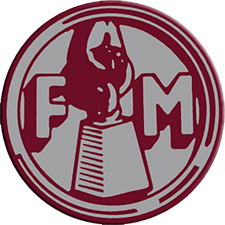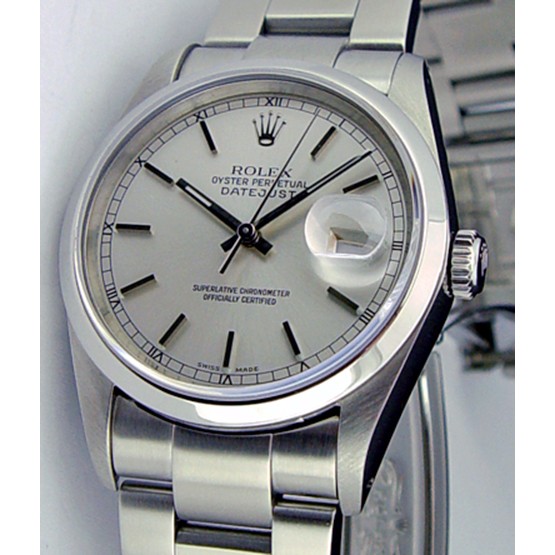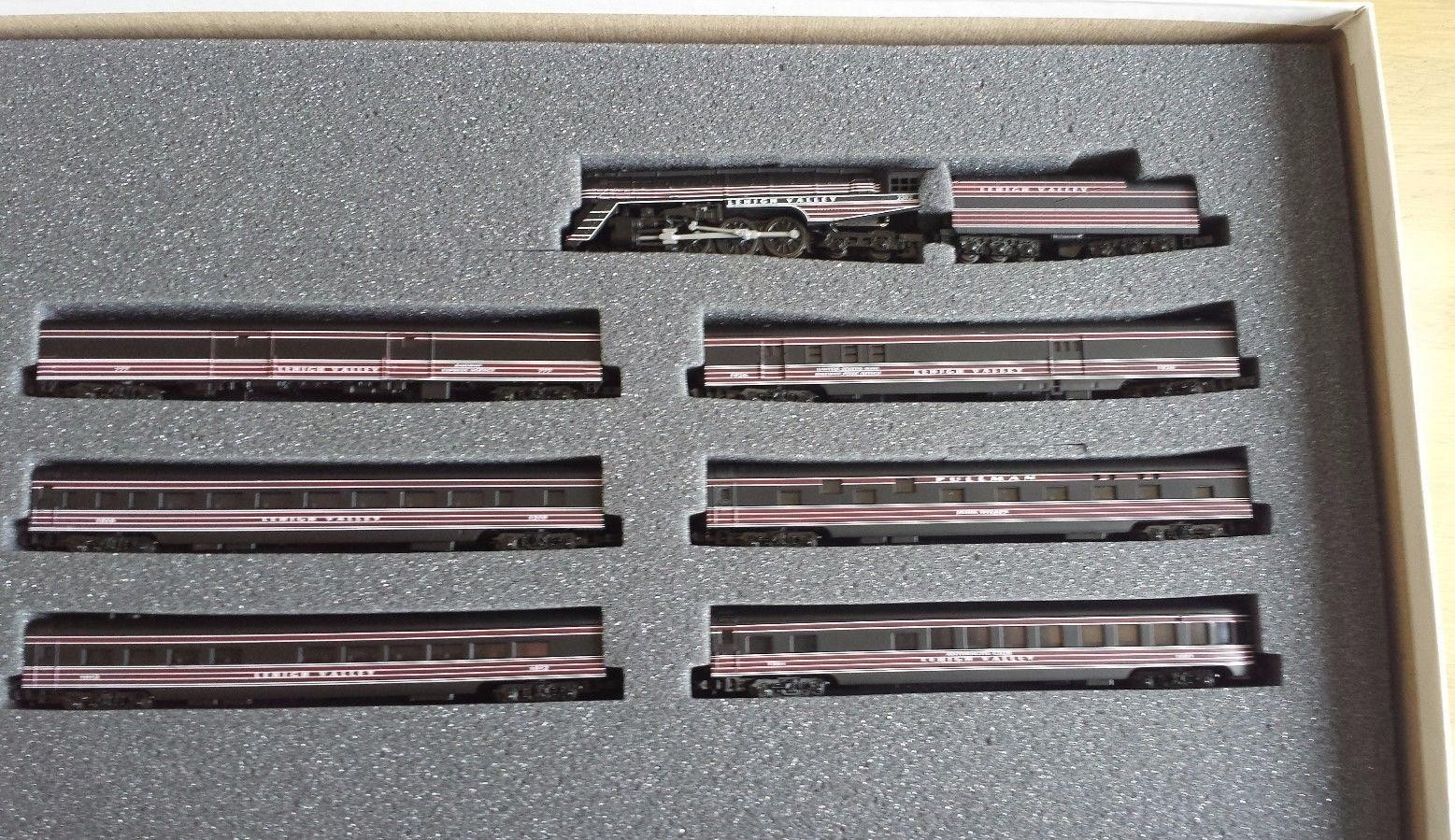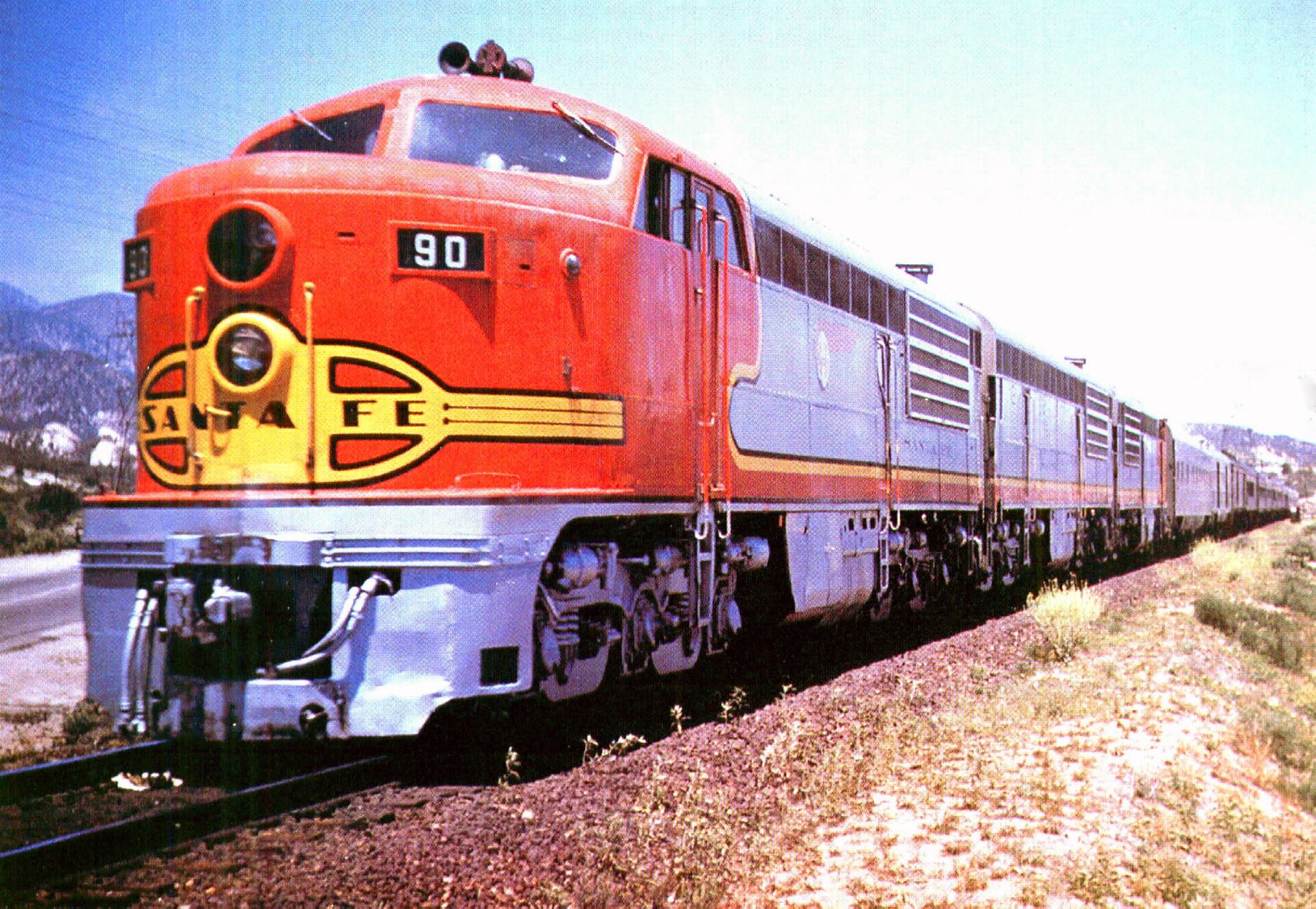Specific Item Information: A unit, powered.
Model Information: Model introduced in 2002, with Rapido couplers and a dummy knuckle front coupler. Very limited and unique run.
It re-used the same chassis structure introduced by Life-Like for its 2000 Alco FA-1/FB-1 and 2001 F-M C-Liner, though longer.
Sold in A/B pairs or as A Unit singletons.
Features:
- Modern split-frame design.
- Non-Directional bulb headlight on A units
- 12 Wheel electrical Pick-Up with Heavy Metal Chassis
- Five-Pole, Skew Wound Armature motor w/dual machined flywheels
- dummy knuckle front coupler on A units
It re-used the same chassis structure introduced by Life-Like for its 2000 Alco FA-1/FB-1 and 2001 F-M C-Liner, though longer.
Sold in A/B pairs or as A Unit singletons.
Features:
- Modern split-frame design.
- Non-Directional bulb headlight on A units
- 12 Wheel electrical Pick-Up with Heavy Metal Chassis
- Five-Pole, Skew Wound Armature motor w/dual machined flywheels
- dummy knuckle front coupler on A units
DCC Information: No provision for DCC.
Prototype History: The Erie-built was the first streamlined, cab-equipped dual service diesel locomotive built by Fairbanks-Morse, introduced as direct competition to such models as the ALCO PA and EMD E-unit. As F-M lacked the space to manufacture the units in their own plant, the work was subcontracted out to General Electric, which produced the locomotives at its Erie, Pennsylvania, facility, thereby giving rise to the name "Erie-built."
The unit's 2,000 hp (1,500 kW), ten-cylinder opposed piston engine prime mover provided ample power to its A1A-A1A wheel set. F-M retained the services of renowned industrial designer Raymond Loewy to create a visually impressive car body for the Erie-built. The initial windshield configuration utilized rectangular glass panes, whereas those units manufactured after March, 1947 received windshields with a curved upper contour. Most units rode on conventional General Steel Castings trucks, but many were fitted with specialized, fabricated, assemblies. Eight of nine KCS Erie-builts were later repowered with an EMD 567 series diesel engine rated at 1750 horsepower.
82 cab-equipped lead A units and 29 cabless booster B units were built for American railroads between December 1945 and April 1949. Afterward, F-M continued to market dual service streamlined units under its Consolidated line of locomotives, more commonly referred to as "C-liners".
No FM Erie-Built units are known to survive today.
From Wikipedia
Read more on American-Rails.com
Full F-M Erie-Built data sheet on The Diesel Shop.
The unit's 2,000 hp (1,500 kW), ten-cylinder opposed piston engine prime mover provided ample power to its A1A-A1A wheel set. F-M retained the services of renowned industrial designer Raymond Loewy to create a visually impressive car body for the Erie-built. The initial windshield configuration utilized rectangular glass panes, whereas those units manufactured after March, 1947 received windshields with a curved upper contour. Most units rode on conventional General Steel Castings trucks, but many were fitted with specialized, fabricated, assemblies. Eight of nine KCS Erie-builts were later repowered with an EMD 567 series diesel engine rated at 1750 horsepower.
82 cab-equipped lead A units and 29 cabless booster B units were built for American railroads between December 1945 and April 1949. Afterward, F-M continued to market dual service streamlined units under its Consolidated line of locomotives, more commonly referred to as "C-liners".
No FM Erie-Built units are known to survive today.
From Wikipedia
Read more on American-Rails.com
Full F-M Erie-Built data sheet on The Diesel Shop.
Road Name History: The Atchison, Topeka and Santa Fe Railway (reporting mark ATSF), often abbreviated as Santa Fe or AT&SF, was one of the larger railroads in the United States. Chartered in February 1859, the railroad reached the Kansas-Colorado border in 1873 and Pueblo, Colorado, in 1876. To create a demand for its services, the railroad set up real estate offices and sold farm land from the land grants that it was awarded by Congress. Despite the name, its main line never served Santa Fe, New Mexico, as the terrain was too difficult; the town ultimately was reached by a branch line from Lamy.
The Santa Fe was a pioneer in intermodal freight transport, an enterprise that (at one time or another) included a tugboat fleet and an airline (the short-lived Santa Fe Skyway). Its bus line extended passenger transportation to areas not accessible by rail, and ferryboats on the San Francisco Bay allowed travelers to complete their westward journeys to the Pacific Ocean. The ATSF was the subject of a popular song, Harry Warren & Johnny Mercer's "On the Atchison, Topeka and the Santa Fe", written for the film, The Harvey Girls (1946).
The railroad officially ceased operations on December 31, 1996, when it merged with the Burlington Northern Railroad to form the Burlington Northern & Santa Fe Railway.
Read more on Wikipedia.
The Santa Fe was a pioneer in intermodal freight transport, an enterprise that (at one time or another) included a tugboat fleet and an airline (the short-lived Santa Fe Skyway). Its bus line extended passenger transportation to areas not accessible by rail, and ferryboats on the San Francisco Bay allowed travelers to complete their westward journeys to the Pacific Ocean. The ATSF was the subject of a popular song, Harry Warren & Johnny Mercer's "On the Atchison, Topeka and the Santa Fe", written for the film, The Harvey Girls (1946).
The railroad officially ceased operations on December 31, 1996, when it merged with the Burlington Northern Railroad to form the Burlington Northern & Santa Fe Railway.
Read more on Wikipedia.
Brand/Importer Information:  Life-Like Products LLC (now Life-Like Toy and Hobby division of Wm. K. Walthers) was a manufacturer of model railroad products and was based in Baltimore, Maryland.
Life-Like Products LLC (now Life-Like Toy and Hobby division of Wm. K. Walthers) was a manufacturer of model railroad products and was based in Baltimore, Maryland.
It was founded in the 1950s by a company that pioneered extruded foam ice chests under the Lifoam trademark. Because ice chests are a summer seasonal item, the company needed a way to keep the factory operating year round. As model railroading was becoming popular in the post-war years, they saw this as an opportunity and so manufactured extruded foam tunnels for model trains. Over the years, Life-Like expanded into other scenery items, finally manufacturing rolling stock beginning in the late 1960s. At some point in the early 1970s, Life-Like purchased Varney Inc. and began to produce the former Varney line as its own.
The Canadian distributor for Life-Like products, Canadian Hobbycraft, saw a missing segment in market for Canadian model prototypes, and started producing a few Canadian models that were later, with a few modifications, offered in the US market with US roadnames.
In 2005, the company, now known as Lifoam Industries, LLC, decided to concentrate on their core products of extruded foam and sold their model railroad operations to Wm. K. Walthers.
In June 2018, Atlas and Walthers announced to have reached an agreement under which all Walthers N scale rolling stock tooling, including the former Life-Like tooling, will be purchased by Atlas.
Read more on Wikipedia and The Train Collectors Association.

It was founded in the 1950s by a company that pioneered extruded foam ice chests under the Lifoam trademark. Because ice chests are a summer seasonal item, the company needed a way to keep the factory operating year round. As model railroading was becoming popular in the post-war years, they saw this as an opportunity and so manufactured extruded foam tunnels for model trains. Over the years, Life-Like expanded into other scenery items, finally manufacturing rolling stock beginning in the late 1960s. At some point in the early 1970s, Life-Like purchased Varney Inc. and began to produce the former Varney line as its own.
The Canadian distributor for Life-Like products, Canadian Hobbycraft, saw a missing segment in market for Canadian model prototypes, and started producing a few Canadian models that were later, with a few modifications, offered in the US market with US roadnames.
In 2005, the company, now known as Lifoam Industries, LLC, decided to concentrate on their core products of extruded foam and sold their model railroad operations to Wm. K. Walthers.
In June 2018, Atlas and Walthers announced to have reached an agreement under which all Walthers N scale rolling stock tooling, including the former Life-Like tooling, will be purchased by Atlas.
Read more on Wikipedia and The Train Collectors Association.
Item created by: Alain LM on 2018-08-01 04:28:25. Last edited by Alain LM on 2020-10-04 15:13:52
If you see errors or missing data in this entry, please feel free to log in and edit it. Anyone with a Gmail account can log in instantly.
If you see errors or missing data in this entry, please feel free to log in and edit it. Anyone with a Gmail account can log in instantly.



